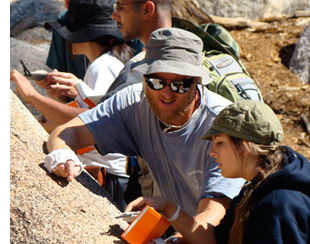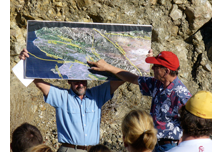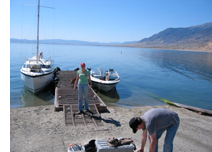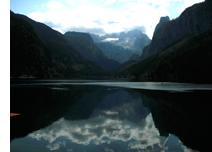
The Department of Earth Sciences teaches more General Education (GE) science credits than any other science department at USC. As leaders of tomorrow, students today face unprecedented challenges that include both ethical and technical issues regarding our planet and its environment. Through a series of outstanding courses, we make science accessible to non-majors, help students develop an understanding of Earth’s systems, and prepare them for a changing world.
Beyond GEs The Department of Earth Sciences also offers undergrad non-majors opportunities to explore their interest in science without changing majors. Any undergraduate is welcome to take GEOL 387A Undergraduate Team Research, an introductory class on the world of research, with a focus on the history of and methods used in the physical sciences. We also are pioneering an undergraduate team research program, with the chance to do research in Mongolia, the High Sierra, and Joshua Tree. A background in geology is not required for these courses, but a passion for doing research is strongly recommended!
Please explore the GE Courses we offer:

GEOL 105Lg: Planet Earth
Introduces undergraduates to the basic concepts of physical geology through the study of (1) Earth as a system of interacting components, (2) plate tectonics as a unifying theory of geology, and (3) changes in the Earth system through geologic time. Earth’s interacting system components include the atmosphere, the hydrosphere, the lithosphere, and the biosphere. Their interactions and the energy that drives them – external (solar) and internal (radioactivity and residual heat from Earth’s formation 4.5 billion years ago) – are focal points for discussions of planetary behavior and physical processes including the hydrologic and rock cycles. Specific topics include magmatic activity, earthquakes, erosion and sedimentation, the oceans, glaciation, climate change, the carbon cycle, and global warming.

GEOL 107Lxg: Oceanography
Introduces oceanographic processes and their role in the Earth system, including climate variability and global environmental change. The course considers processes of plate tectonics, ocean circulation, biogeochemical cycles, marine sedimentation, marine biology, and ecology. Topics also include the relationship between oceanographic processes and the availability of mineral and energy resources and problems of pollution in the world’s oceans. The laboratory section associated with the course employs a hands-on approach to illustrate the methods which oceanographers use to develop an understanding of how the world’s oceans work. Selected videos will be shown in lectures and labs to illustrate dynamic processes.

GEOL 108Lg: Natural Disasters and Their Global Impact
The science behind natural disasters and their impacts on society, focusing on earthquakes, tsunamis, volcanic eruptions, landslides, floods, hurricanes, tornadoes and wildfires, often through Southern California-based examples.

GEOL 150Lxg: Climate Change
Understanding the climate system and being able to make accurate statements about future climate change is of such importance to our social well being that climate research is a major focus in the United States scientific community. This course is designed to provide the student with an introduction to the science of climate change, examining how the climate system operates and the impact of climate change on biological, sociological, and economic patterns on Earth. Students investigate records of past climate on Earth ranging from the time of the dinosaurs to the dawn of man. The course also explores some of the controversial aspects of potential future climate change, including global warming and greenhouse effect and El Niño. Students examine real climate data and use this data to learn how climate change is evaluated. In the laboratory, students participate in the development of scientific hypotheses, which are then tested by conducting an experiment or making observations. Laboratory assignments provide hands-on experience and help students understand the complexity of the climate system, how it operates, and how it is susceptible to change.

GEOL 240Lxg: Earthquakes
This course begins with a discussion of plate tectonics as an explanation of where earthquakes occur and why. We then explore the relation between earthquakes and faulting with emphasis on the active faults in California. The nature and origin of seismic waves is discussed, and their reflection and refraction at boundaries is developed as a tool to explore the internal structure of the Earth. We discuss seismic instrumentation and show how it is used to locate an earthquake and estimate its size. In the latter part of the course we attempt to quantify the seismic risk faced by an increasingly urbanized world population in terms of proximity to active faults, the local geology, and construction practices. Finally we address the question of why earthquakes are so difficult to forecast.